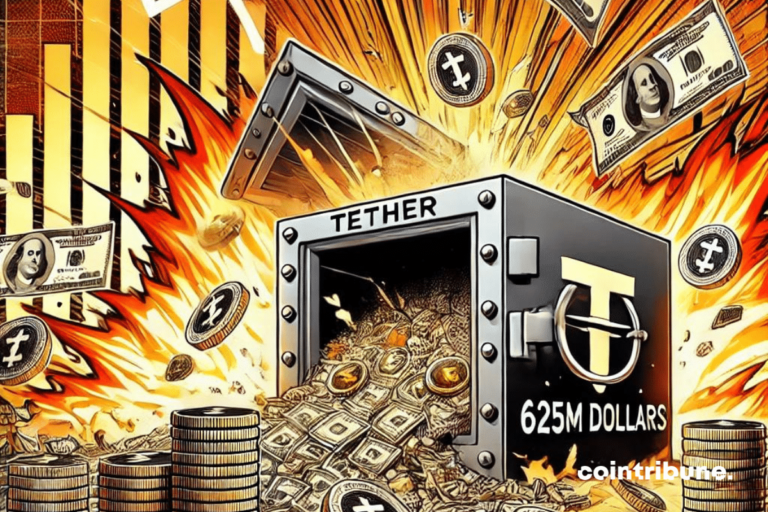Monday, September 30, 2024 ▪ 5 minute read ▪ Written by Evans S.
Tether and four other stablecoin issuers are at risk of losing $625 million in annual interest income as the Federal Reserve begins to change its interest rate policy. This upheaval, revealed in a recent CCData report, highlights a key pillar of stablecoins’ economic model: their dependence on U.S. Treasuries.
Fed changes policy: Stable coins shake up
Since the rise of stablecoins, these cryptocurrencies backed by real assets have established themselves as pillars of stability in the ecosystem.
However, their success depends primarily on their investment strategy in U.S. Treasuries, an asset renowned for its safety and profitability. However, the Fed’s recent decision to cut rates has shuffled the deck.
In fact, when interest rates fall, the yield on government bonds also falls. For an issuer like Tether, whose reserves are nearly 80% comprised of U.S. Treasuries, this means the returns on these investments will immediately decline.
According to CCData, this decline could cost the stablecoin industry around $625 million, a staggering number that reflects its dependence on US monetary policy.
The numbers speak for themselves. Tether, the undisputed leader of stablecoins with $93.2 billion in assets under management, is particularly at risk.
Record profits for the first half of 2024 reached $5.2 billion, much of which relies on income from U.S. Treasuries. These revenues are currently under serious threat.
Diversification: The future of stablecoins?
In the face of this threat, the question arises whether stablecoins can continue to grow by relying solely on government bonds. There are some signs to suggest that stablecoin issuers like Tether have already begun diversification strategies to mitigate this vulnerability.
Tether recently invested more than $112 million in an Argentine agribusiness company, a move that is surprising for a cryptocurrency company but signals a desire to diversify its revenue.
This investment in agribusiness reflects a growing trend for stablecoin issuers to explore areas outside of finance to secure new revenue streams. The question remains: Will this diversification be enough to offset the decline in Treasury yields?
Meanwhile, other cryptocurrencies such as Circle’s USDC are in a similar position. USDC, which holds $28.7 billion in government bonds, can be said to be in a similar situation to Tether. But Circle is betting on more dynamic money management, particularly through the Circle Reserve Fund, to reduce the impact of falling interest rates.
Toward a change in the economic model?
The Fed’s decision is particularly noteworthy. This change could be a turning point for the stablecoin economy.
Interest income from government bonds has long been a major source of profit for these companies, allowing them to function while ensuring token stability. If these revenues decline, issuers could be forced to rethink their economic models.
One option for stablecoin issuers would be to increase service fees or explore new investment vehicles.
However, this poses challenges. How do you maintain user trust while adapting your model to a low interest rate environment? If Tether, Circle, and other stablecoins fail to find viable alternatives, they risk losing competitiveness with other decentralized finance players that rely less on traditional assets.
Pressure is mounting, and the future strategies of stablecoin issuers are in the spotlight. Will they be able to weather this storm, or will they have to make concessions to more agile alternatives? The stablecoin sector faces significant challenges with this latest Fed decision. While a $625 million loss may seem bearable in the short term for a behemoth like Tether, the question of long-term resilience remains an open question. The economic model that brought them success now appears to be under threat. Meanwhile, Bitcoin and altcoins have collapsed dramatically.
Get the most out of your Cointribune experience with the Read to Earn program! Earn points every time you read an article and get access to exclusive benefits. Sign up now and get rewards.
Evans S.
The appeal of Bitcoin in 2017, creating important documents. This essay aims to revitalize Avance, which is the forefront of transactions and the center of virtual currency. En tant que redacteur, il aspire à fournir en permanence un travail de haute qualité qui reflète l’état du secteur dans son ensemble.
Disclaimer
The views, ideas and opinions expressed in this article are solely those of the author and should not be construed as investment advice. Please do your own research before making any investment decisions.


